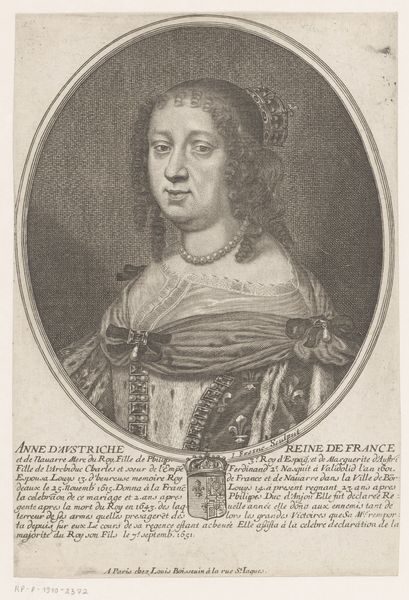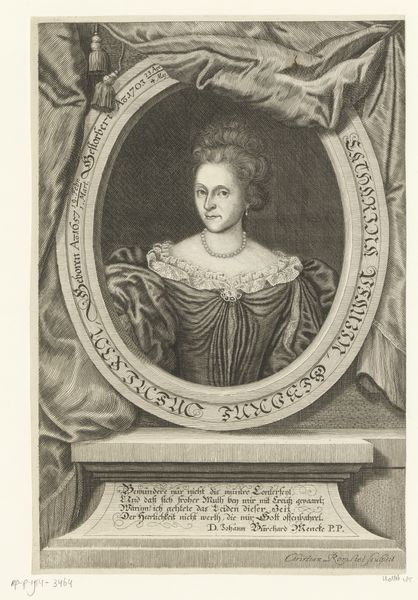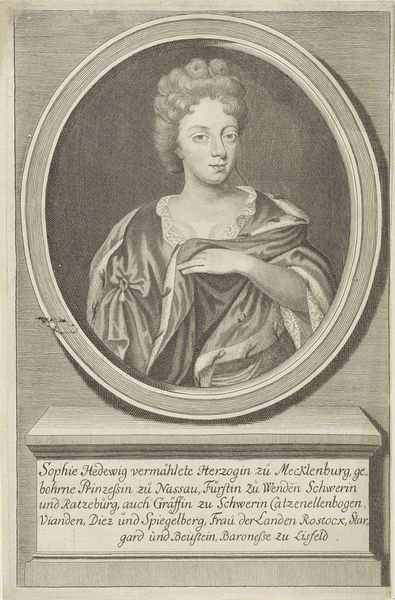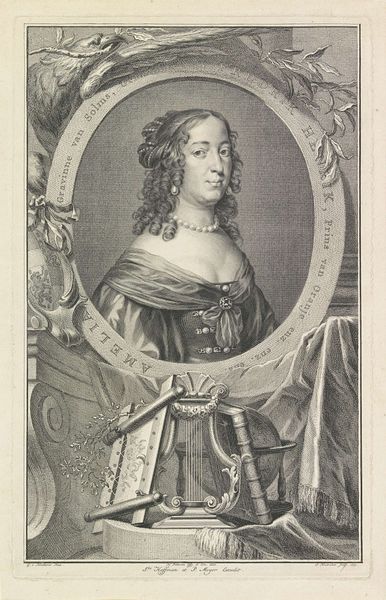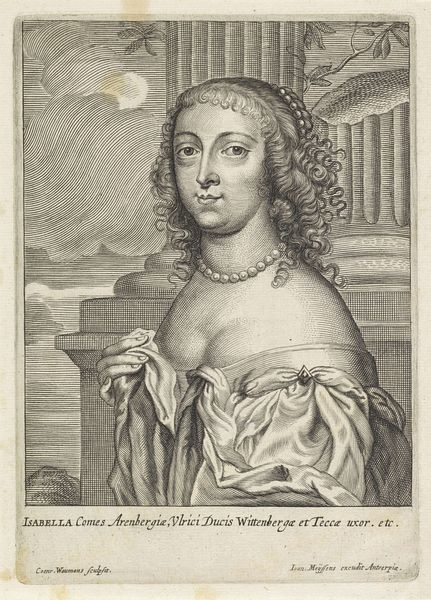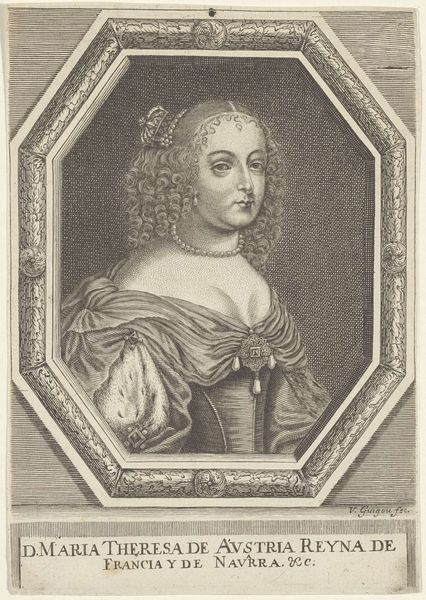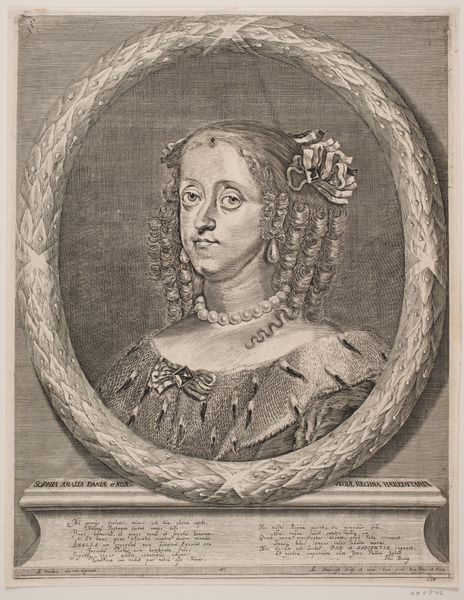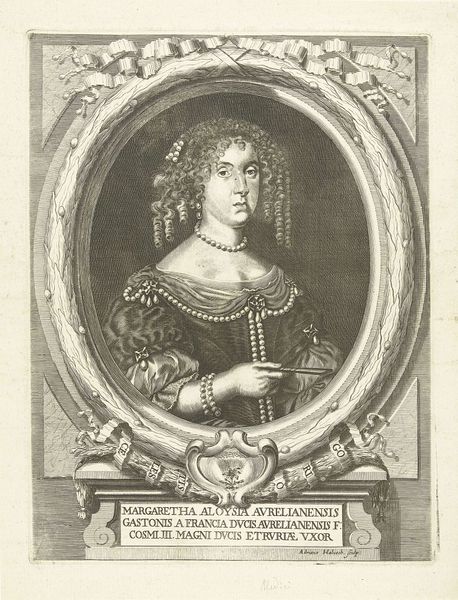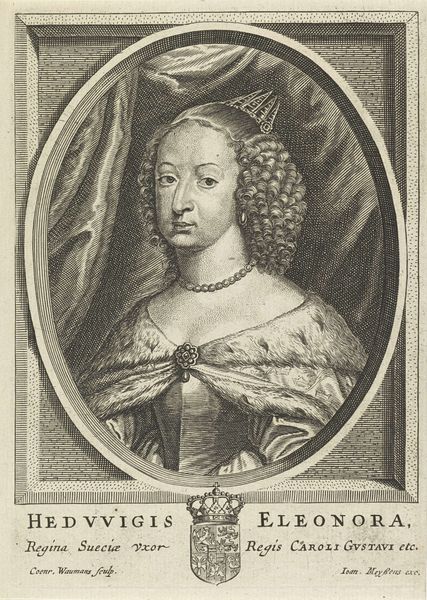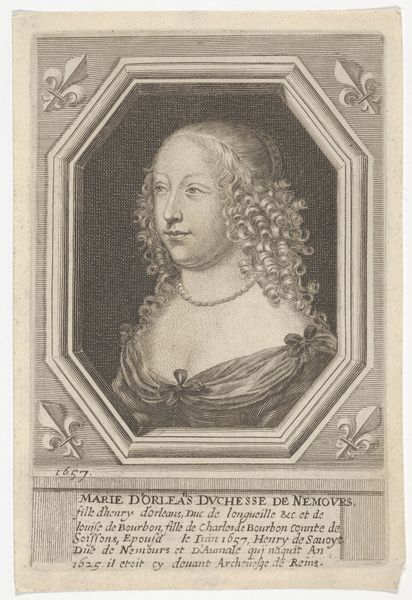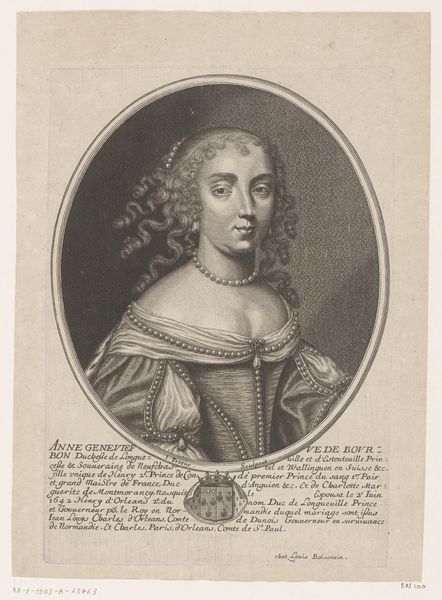
print, engraving
#
portrait
#
baroque
# print
#
old engraving style
#
figuration
#
line
#
history-painting
#
engraving
Dimensions: height 163 mm, width 116 mm
Copyright: Rijks Museum: Open Domain
Editor: So, here we have a print, made sometime between 1628 and 1670, by Pieter de Jode II. It’s a portrait of Anna of Austria. The detail achieved with simple engraving is striking! What strikes you most about this image? Curator: Isn't it remarkable? To me, it’s the tension between the public and the private. The formal setting and inscription declare her status—Serenissima Potentissima—but her gaze seems almost wistful, maybe even vulnerable. Notice the medallion she holds; it likely portrays a loved one, drawing us into a more intimate narrative. It’s a subtle dance between power and personality. Does the Baroque style add to that sense of drama, do you think? Editor: Absolutely, the swirling lines and rich textures definitely amplify the emotional impact. It almost feels like a fleeting moment captured in ink. It’s interesting how history-painting and the portrait genre come together. Do you see the history in the subject or the style? Curator: Hmmm, intriguing question! Perhaps it's in the act of memorialization itself. Each line immortalizes her legacy. Plus, let's consider Anna of Austria's place in history - a powerful queen consort. But then the Baroque flamboyance clashes a bit with that soberness, as the details risk obscuring her image, so I'd agree more with you there. Did this artwork leave a strong impression on you? Editor: Yes! It's made me rethink how we perceive historical figures. Curator: And for me, a delightful reminder that even within formal constraints, an artist can weave an undercurrent of deeply human feeling.
Comments
No comments
Be the first to comment and join the conversation on the ultimate creative platform.
